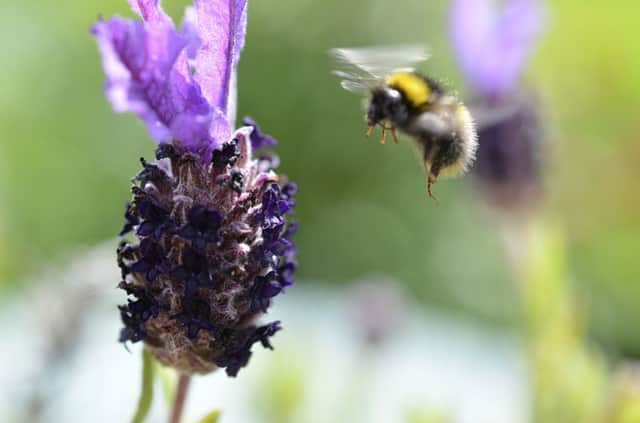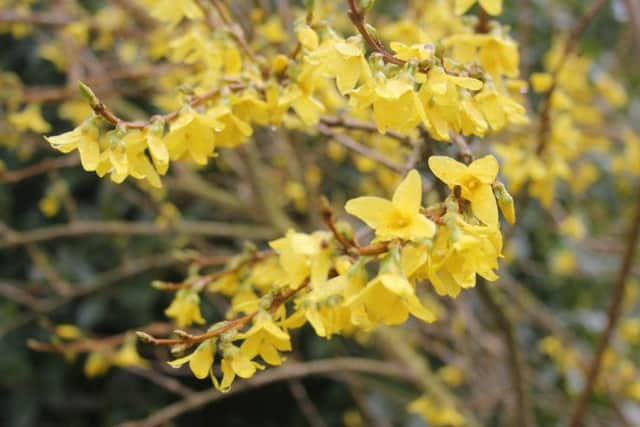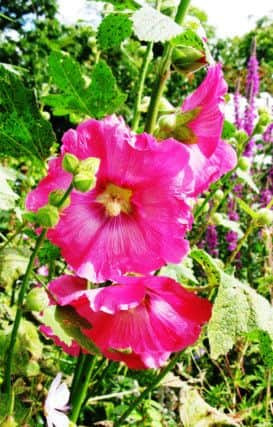We all need to do our bit to arrest the decline in bee numbers


It is estimated that during the winter of 2008-09, 20 per cent of the UK’s honey bee colonies were lost, due to bad weather, diseases spread by the varroa mite and through diminishing habitats, making it harder for bees to forage for food.
Pollution and pesticides are also believed to be contributing to the plight of our bees. Bees are important. They visit flowers to collect nectar and pollen and pollinate most of our fruit trees and some of our vegetables, which is essential for cropping.
Advertisement
Advertisement
Gardeners can easily help bees by growing bee-friendly plants and, especially, by encouraging bees into the garden by providing them with flowers in early spring and autumn so that there is a source of nectar for a longer period of time.


Obviously having flowers in the garden throughout the year, makes it a more interesting place for us as well as the bees.
The best plants for bees are those with simple flowers, like as the daisy family which includes sunflowers and asters.
Bees also like taller plants such as foxgloves, hollyhocks and larkspur.
Advertisement
Advertisement
Plants with double flowers or lots of petals make it more difficult for the bees to reach their nectar.


Some of the fuller petalled flowers may even lack nectar and not all garden plants have pollen; some varieties of lily and sunflower, grown as florists’ flowers, have been bred to be pollen free.
Amongst the shrubs, the gorgeous lemon-scented winter honey suckle (Lonicera fragrantissima), which flowers in late winter and early spring, is an excellent source of pollen and nectar, as are the forsythias and flowering currants.
In summer, the single flowered shrub roses, such as ‘Ballerina’ and the long-flowering Rosa rugosa, the butterfly bush (Buddleia davidii), lavender, hebes and potentillas are all attractive to bees.
Advertisement
Advertisement
Ivy also provides a welcome source of late nectar and pollen.
The British Beekeepers’ Association has produced an excellent list of pollen- and nectar-rich garden plants which can be grown to provide flowers across the seasons. Details are on their website, www.bbka.org.uk
Planting bee-friendly plants in groups make them more attractive for the bees and aesthetically, planting in groups and drifts looks better.
In Clumber’s double herbaceous borders, for example, we usually plant in threes, fives or sevens.
Advertisement
Advertisement
Pesticides are known to be hazardous to bees, so take care when using garden chemicals.
The labels will say how harmful a product may be. Spraying in the evening, when bees are less active and have stopped flying allows time for the chemical to dry before the bees start flying again.
Weeds and many pests can be controlled without using chemicals, so think about hoeing, biological controls, growing pest and disease resistant varieties and good garden hygiene before using weed killers and insecticides.
Sadly, bumble bees and solitary bees are just as much under threat as the honey bees but you can help them as bee sanctuaries and shelters can be bought from garden centres.
Advertisement
Advertisement
These usually consist of hollow canes or cardboard tubes with a wooden surround and provide an ideal nest site in the garden for solitary bees.
A ‘bee hotel’ will feature in this summer’s Bees and Honey Trail in Clumber’s walled kitchen.
Children and families should enjoy finding the different model bees and bee clues in the garden and learning about bees and what we can do to help them.
The trail runs between 21st July and 4th September. For further details, go to www.nationaltrust.org.uk/clumber-park
Advertisement
Advertisement
In the garden there are several jobs that can ben tackled during July.
Continue sowing quick maturing salad crops. Chinese cabbage can be sown towards the end of the month. To avoid plants going to seed, sow directly into the soil and thin to about 30cm (12in) spacings.
Remove a few of the poorly placed or misshapen developing fruits on apples, pears and plums. This will enable the remaining fruits to develop into larger, better quality fruits.
Take cuttings of pelargoniums, fuchsias and outdoor plants which are not reliably hardy, such as penstemons. Use non-flowering shoots about 7.5cm (3in) long.
Advertisement
Advertisement
Sweet peas are flowering. As soon as the blooms fade, cut them off. This will encourage the plant to produce more flowers.
Continue tying in the developing stems of climbers such as roses, clematis and honeysuckles.